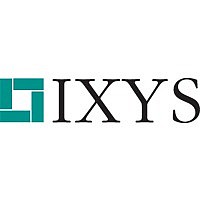MX877RTR IXYS, MX877RTR Datasheet - Page 7

MX877RTR
Manufacturer Part Number
MX877RTR
Description
IC DVR RELAY/LOAD 8CH 60V 28-QFN
Manufacturer
IXYS
Specifications of MX877RTR
Input Type
Parallel/Serial
Number Of Outputs
8
Current - Output / Channel
80mA
Voltage - Supply
6 V ~ 60 V
Operating Temperature
-40°C ~ 85°C
Mounting Type
Surface Mount
Package / Case
28-QFN
Lead Free Status / RoHS Status
Lead free / RoHS Compliant
On-state Resistance
-
Current - Peak Output
-
2 Functional Description
The MX877 is an 8 channel high voltage driver with
8-bit input control. The MX877 interfaces to a
microprocessor through a standard 3 wire serial
interface and an active-low chip select, or can be used
in a parallel-in, parallel-out configuration.
Parallel data is transferred to the I/O register of the
MX877 through the parallel input pins, IN0 through IN7
on the falling edge of the chip select pin, CS*. When
CS* is in a logic low state, serial data can be
transferred to the I/O register through the serial input
pin, SDI, and from the I/O register through the serial
output pin, SDO. Parallel or serial input data is
transferred from the I/O register to the latch and high
voltage output drivers, OUT0 through OUT7, on the
positive edge of CS*. This data remains latched until
the next positive edge of CS*.
The 8-bit I/O shift register is clocked by the serial clock
pin, SCK. Serial data presented at the SDI pin is
transferred to the shift register on the positive edge of
SCK. Data shifts out of the register through the SDO
pin on the negative edge of SCK. SDI and SCK are
ignored, and SDO transitions to a high impedance
condition when CS* is at a logic high state.
Serial data is received by the MX877 through the SDI
pin. This data is accepted on the rising edge of SCK. A
specific output is programmed to a logic high state if
SDI is at a logic high state during the rising edge of
SCK. Conversely, a specific output is programmed to a
logic low state if SDI is at a logic low state during the
rising edge of SCK. Outputs transition to their
programmed states on the positive edge of CS* if the
output enable pin, OE is in a logic high state.
The MSB input data (IN7) is presented at the serial
output pin, SDO on the falling edge of CS*. Input data
from IN6 through IN0 is sequentially presented at
SDO on negative SCK transitions if CS* remains in a
logic low state. If CS* is at a logic low state beyond 8
cycles of SCK, SDI data that has propagated through
the I/O register will then be presented at SDO. The
SDO pin transitions to a high impedance state when
CS* is in a logic level high state, thus allowing multiple
serial peripherals to share the microprocessor data
pin.
R00B
www.clare.com
Figure 1. Serial Data Transfer Example
Devices may be serially cascaded by connecting SDO
to SDI of the next device. Pins SCK and CS* are
common to all devices in serial cascade. For
n-cascaded devices the CS* should remain low for 8n
cycles of SCK.
An output enable pin, OE enables the driver outputs
OUT0 through OUT7 when logic high. A logic low level
on OE forces the OUT0 through OUT7 outputs to a
high impedance state.
The MX877 can also operate as a parallel-in,
parallel-out level shifter and driver. SCK must remain
at a logic low state when operating in this mode.
Parallel input data presented to IN0 through IN7 is
captured on the falling edge of CS*. This data is
transferred to OUT0 through OUT7 on the rising edge
of CS*, and remains latched until the next rising edge
of CS*.
SDO
SCK
OUT7
OUT6
OUT5
OUT4
OUT3
OUT2
OUT1
OUT0
IN4
IN3
IN2
IN1
IN0
CS
SDI
IN7
IN6
IN5
*
0
0
1
0
1
1
1
0
t1
1
0
0
0
0
1
0
0
0
1
1
1
1
1
0
0
MX877
SDI at
time t1
1
0
0
1
1
0
0
0
7












